50 Fabulous 4th of July Facts: The 13 Original Colonies
The Originals
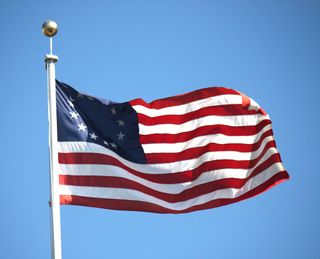
In this second of five features, to publish each day through July 4, LiveScience presents 10 important, obscure and fascinating facts about America's most patriotic holiday. [Read: 50 Fabulous Facts About the 4th of July: History of Independence]
Name 'Em All
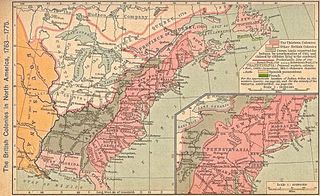
Today’s 50 U.S. states grew from the 13 original colonies that declared their independence in 1776. Can you name them all? Give it a try and then scroll down...
The 13 original colonies are: Connecticut, Delaware, New Jersey, New York, New Hampshire, Massachusetts Bay, Rhode Island, Pennsylvania, Maryland, North Carolina, South Carolina, Virginia and Georgia.
First Assembly

Virginia was home to the first European-style representative assembly in North America, which took place on July 30, 1619. The goal was to establish a colonial government for Virginia, first settled by Europeans at Jamestown in May 1607. The early colony did not get off to a good start, with attacks by the native Algonquins and disease decimating the population. During the winter of 1609, famine and disease killed all but 60 of Jamestown’s original 214 settlers.
Settle a Debt

Pennsylvania’s formation settled a debt. King Charles II owed William Penn, a wealthy, high-class Briton, 16,000 British pounds. Penn, however, had converted to Quakerism, a religious group persecuted for its pacifist beliefs. He saw the opportunity to create a haven for Quakers and asked Charles II for land in lieu of money. In 1681, the king signed over the land between Maryland and New York to Penn, and Pennsylvania was born.
Penman of the Revolution
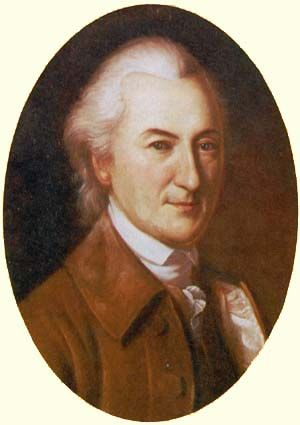
The first state president of Delaware, John Dickinson, was known as the “penman of the Revolution” for his persuasive essays, “Letters from a Farmer in Pennsylvania,” published in 1767 and 1768. The letters argued against Great Britain’s taxation and won Dickinson great fame, though he was actually a lawyer, not a farmer. As state president of Delaware in 1781-1782, Dickinson’s first act was to issue a “Proclamation Against Vice and Immorality.”
First and Last
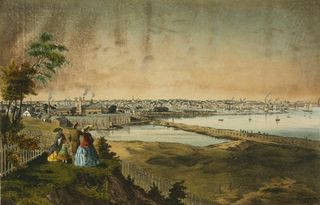
Rhode Island was the first state to renounce its allegiance to the British Empire on May 4, 1776. It would also be the last state to ratify the new U.S. Constitution. According to The History Channel, Rhode Island had a thriving trade business and two busy ports at Providence and Newport. The colony flirted with remaining independent from the new United States, but it soon became clear that joining with the new republic made good business sense. Rhode Island ratified the Constitution on May 29, 1790.
Teen Genius

A teenage girl was responsible for developing colonial South Carolina’s second-largest crop: Indigo. Eliza Lucas was left in charge of her father’s three plantations at age 16 when her father, a British military officer, was stationed in Antigua. The elder Lucas sent his daughter a variety of seeds to test in South Carolina’s climate. After many experiments, Eliza Lucas made indigo work. Unfortunately, both the cultivation of both rice and indigo depended heavily on slave labor.
Lost and Gone Forever

One of Colonial America’s most enduring mystery stories is what happened to the settlers of the “Lost Colony.” In 1587, surveyor and expedition leader John White left 117 settlers, including his pregnant daughter, on Roanoke Island on the coast of what is now North Carolina. By the time White made it back three years later, the settlers had vanished.
To this day, no one knows what happened to the Lost Colony. The settlers may have moved elsewhere or given up their colony to marry and intermingle with local Native American Tribes. Those same tribes may have killed them, or they could have died of disease and famine. Archaeologists have turned up little evidence to support any of the theories. According to a 1972 study published in the Annals of the Association of American Geographers, it’s possible they never will: Shoreline erosion has so changed North Carolina’s barrier islands that it’s likely the site of the Lost Colony is now underwater.
This Old Man

Europeans first settled in New Hampshire in 1623, but it wasn’t until 1805 that a survey team discovered the natural rock feature that would become forever linked with the state: The Old Man of the Mountain. This series of granite ledges looked eerily like a craggy face before they collapsed in 2003, victim of millenia of erosion. Statesman Daniel Webster said of the formation, “Men hang out their signs indicative of their respective trades; shoemakers hang out a gigantic shoe; jewelers a monster watch, and the dentist hangs out a gold tooth; but in the mountains of New Hampshire, God Almighty has hung out a sign to show that there He makes men."
A Georgia First
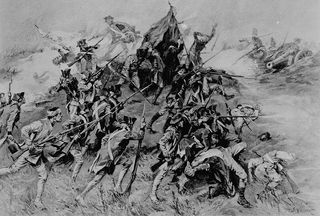
Georgia celebrates her first English settlement on February 12, Georgia Day. On this day in 1733, British parliamentarian James Oglethorpe landed at what is now the city of Savannah with about 100 settlers. During the Revolutionary War, Savannah was in the hands of the British, despite a failed 1779 attempt to win the city back.
The Revolution Ends

The last major military battle of the Revolutionary War took place in 1781 in Yorktown, Va. (Where British General Cornwallis surrendered.) But New York was the site of the last shots of the Revolutionary War. On “Evacuation Day,” Nov. 26, 1783, the last British troops in America left their station in New York. As the British ships pulled away from the ecstatic crowds on Staten Island, a gunner fired one last cannon shot toward the shore. The shot fell harmlessly in the sea.
Sign up for the Live Science daily newsletter now
Get the world’s most fascinating discoveries delivered straight to your inbox.

Stephanie Pappas is a contributing writer for Live Science, covering topics ranging from geoscience to archaeology to the human brain and behavior. She was previously a senior writer for Live Science but is now a freelancer based in Denver, Colorado, and regularly contributes to Scientific American and The Monitor, the monthly magazine of the American Psychological Association. Stephanie received a bachelor's degree in psychology from the University of South Carolina and a graduate certificate in science communication from the University of California, Santa Cruz.
